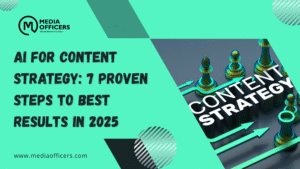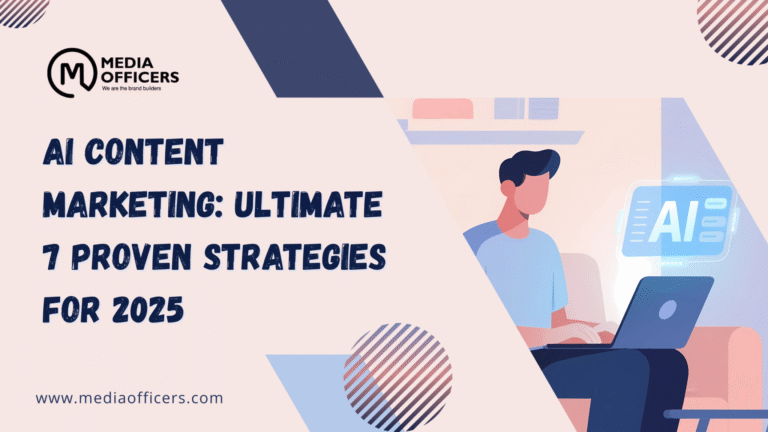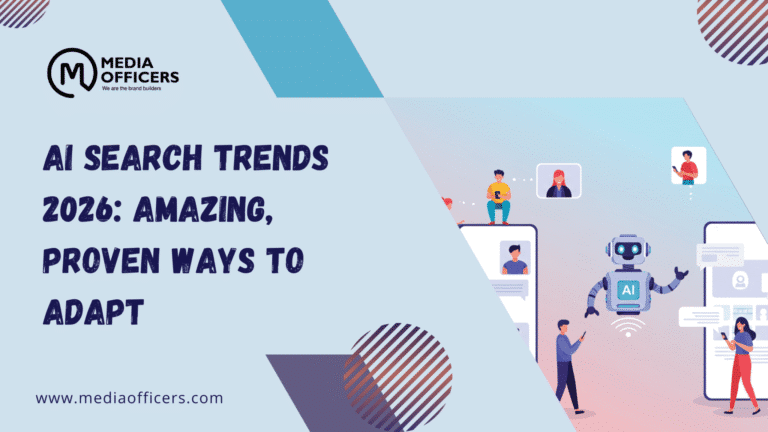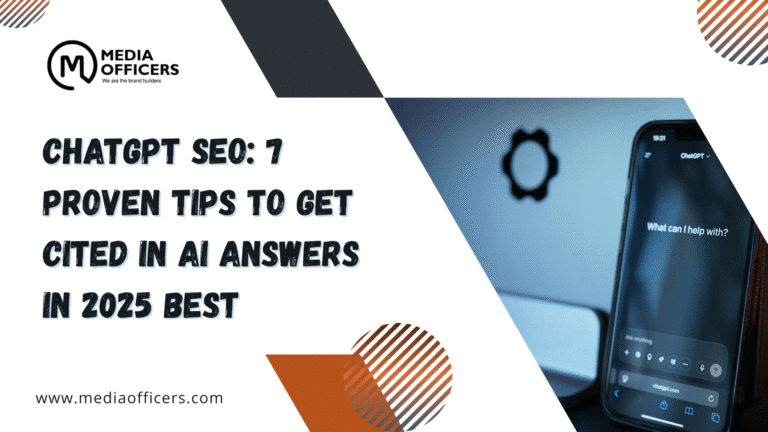AI for Content Strategy is redefining how brands ideate, create, and measure content performance. By harnessing data, automation, and AI-powered insights, you can align every piece of content with real audience intent and measurable business goals. This guide walks you through a practical, step-by-step approach to building an AI-driven content engine that delivers consistent ROI.
Why AI for Content Strategy Matters Today
In a crowded digital landscape, attention is scarce and competition is relentless. AI for Content Strategy helps you cut through the noise by revealing what your audience actually cares about, predicting topics they’ll engage with, and delivering content at the right moment. The result is higher engagement, faster production cycles, and a clearer line of sight from ideation to revenue. When you anchor your work in data and automate repetitive tasks, you free time for strategic thinking and creative experimentation—the core of any sustainable content machine.
With advances in natural language processing, machine learning, and semantic SEO, AI for Content Strategy is not replacing the human touch; it amplifies it. You get smarter topic discovery, better optimization, and a consistent process that scales. The key is to combine AI-driven insights with the nuanced storytelling only humans can provide, ensuring that content resonates, converts, and endures.
How AI Enhances Every Stage of a Content Strategy
AI for Content Strategy touches every phase of the content lifecycle, from discovery to distribution. It accelerates ideation, sharpens precision in targeting, and improves performance measurement. Below are the core ways AI strengthens each stage and the related keywords you’ll likely encounter in the wild: AI content creation, content planning with AI, SEO with AI, and a data-driven content strategy mindset.
- Audience insights and intent mapping that reveal who to write for and why.
- Topic discovery and competitive gaps that point to high-value angles.
- Drafting, editing, and optimization that preserve voice while increasing consistency.
- Editorial workflows and scheduling powered by automation to sustain cadence.
- Distribution optimization across channels with predictive performance signals.
- Repurposing strategies that extend content lifespan without reinventing the wheel.
- Measurement dashboards that translate data into actionable next steps.
Throughout, AI for Content Strategy acts as a force multiplier, turning raw data into a repeatable playbook that teams can follow at scale.
Step 1: Discover Audience with AI
What you’ll gain
The first pillar of any successful AI for Content Strategy is a precise understanding of who you’re talking to and what they care about. AI helps you move beyond rough personas to probabilistic insights that update as new data arrives.
- Identify audience segments based on behavior, intent, and demographics.
- Uncover questions, needs, and pain points that drive engagement.
- Build data-driven personas that evolve with your audience.
Practical techniques include topic and query mining, sentiment analysis of comments, and analyzing competitive content gaps. When you combine these AI-powered signals with human judgment, you create a foundation that informs every subsequent step in AI for Content Strategy.
Step 2: Ideation and Topic Discovery with AI
What you’ll gain
Ideas are the fuel of content, and AI for Content Strategy accelerates discovery while ensuring relevance. Use AI to surface angles, keywords, and formats that resonate with your audience and align with business goals.
- Brainstorm topic clusters around core themes and subtopics.
- Identify high-impact keywords and semantic relationships for SEO with AI.
- Prioritize topics based on potential engagement, search volume, and competitive gaps.
To keep your content authentic, pair AI-generated topic ideas with a quick human vetting process. This preserves voice and brand edge while leveraging AI to scale ideation across teams and markets.
Step 3: Creating Content with AI While Preserving Human Voice
What you’ll gain
AI content creation can speed up drafting and iterations, but the goal is to maintain a human voice that fits your brand. Use AI as a co-author, then refine, inject personality, and ensure accuracy.
- Draft outlines and first-pass manuscripts that capture key messages and structure.
- Leverage AI-assisted writing to maintain consistency across formats (blogs, videos, social), while preserving brand tone.
- Apply stylistic and factual checks to reduce errors and improve readability.
Best practices emphasize transparency about AI involvement and a rigorous editing process. This is essential to ensure AI for Content Strategy delivers credible, readable, and valuable content that benefits both users and search engines.
Step 4: Editorial Calendar and Workflow Automation
What you’ll gain
Consistency and efficiency are the backbone of scalable content. Automating the workflow with AI ensures topics move from ideation to publication with minimal friction.
- Automated topic-to-calendar mapping that aligns with product launches, campaigns, and seasonality.
- Content staging, review workflows, and approvals with AI-guided reminders.
- Version control, reuse planning, and content aging strategies to maximize value.
In practice, content planning with AI reduces bottlenecks and keeps teams aligned on milestones, SLAs, and quality standards. You’ll protect consistency while freeing time for strategic optimization.
Step 5: Distribution and Amplification Using AI
What you’ll gain
Producing great content is not enough; it must reach the right audience. AI-powered distribution helps you choose channels, personalize messaging, and optimize timing for maximum impact.
- Channel selection guided by audience behavior and predicted engagement.
- Personalized content variants tailored to different segments and formats.
- Automated posting schedules and cross-channel amplification that adapt in real-time.
When applying SEO with AI and distribution intelligence, you ensure content gains visibility where it matters most while remaining aligned with your editorial strategy.
Step 6: Repurposing Content Across Channels
What you’ll gain
Repurposing extends the lifespan of every asset. AI helps you map one piece of content to multiple formats and channels, preserving core messages while adapting to audience preferences.
- Automatic extraction of core insights to form new formats (podcasts, infographics, long-form guides).
- Format-specific optimization to maximize engagement on each platform.
- Content versioning that maintains consistency and traceability across channels.
This approach is a practical example of a data-driven content strategy that scales without sacrificing quality. AI for Content Strategy makes it feasible to publish more often without diluting impact.
Step 7: Measuring Impact and Optimizing with AI Analytics
What you’ll gain
Measurement closes the loop. AI-powered analytics translate content performance into actionable steps, enabling continuous improvement and a demonstrable ROI.
- Key metrics aligned with business goals: awareness, engagement, leads, and revenue.
- Attribution models that trace effects of content through the funnel.
- Automated reporting and anomaly detection to spot opportunities or issues fast.
By consistently revisiting data, you refine AI for Content Strategy to better predict topics, optimize distribution, and sharpen messaging over time. This iterative approach sustains growth and efficiency.
Tools, Tactics, and Best Practices for AI-Driven Content
To unlock the full potential of AI for Content Strategy, you’ll want a balanced toolkit that blends automation with human oversight. Key components include:
- AI writing and ideation assistants that respect brand voice while enabling faster drafts.
- SEO platforms enhanced by AI for intent-driven keyword research and semantic optimization.
- Content management and editorial workflow tools that automate routing and approvals.
- Analytics dashboards with AI-based forecasting to guide future topics and formats.
Best practices emphasize governance, transparency, and quality control. Clearly define when AI contributions are allowed to replace human tasks and when humans must step in to approve, edit, or reimagine AI output. This guardrails approach keeps your AI for Content Strategy initiative credible and effective.
Common Pitfalls to Avoid in AI-Driven Content Programs
- Overreliance on automation at the expense of human insight and narrative quality.
- Inaccurate data feeding the AI models, leading to misguided topics or misaligned objectives.
- Neglecting compliance, accessibility, and ethical considerations in AI-generated content.
- Failing to maintain a consistent brand voice across AI-generated formats.
By planning guardrails, validating data, and continuously testing content against audience feedback, you can minimize risk and maximize results from AI for Content Strategy.
Frequently Asked Questions
What is AI for Content Strategy?
AI for Content Strategy combines AI-driven insights, automation, and data analytics to inform ideation, creation, distribution, and optimization of content. It augments human creativity, speeds up processes, and helps teams scale while preserving brand voice and accuracy.
How do I start implementing AI in my content strategy?
Begin with a clear goal and a small pilot project. Choose one content family (for example, blog posts around a core theme), deploy AI tools for ideation and drafting, set up a simple editorial workflow, and measure results. Use learnings to expand gradually to other formats and channels.
Will AI replace my content team?
No. AI is a supplement that handling repetitive tasks and data-heavy analysis, freeing your team to focus on strategy, storytelling, and creativity. The human touch remains essential for authenticity and trust.
What metrics matter most in AI-powered content programs?
Core metrics include engagement (time on page, scroll depth), conversion rate, social shares, traffic quality, and, importantly, revenue attribution. Combine these with process metrics like cycle time and publication cadence to gauge efficiency improvements.
Conclusion
Adopting AI for Content Strategy is not about replacing people but about augmenting their capability to produce better, faster, and more relevant content. By following the 7 proven steps outlined here, you can build a scalable AI-driven content engine that delivers measurable results—while preserving the human storytelling that truly resonates. Start small, measure rigorously, and iterate toward a data-driven, audience-centric content machine that grows with your business.





